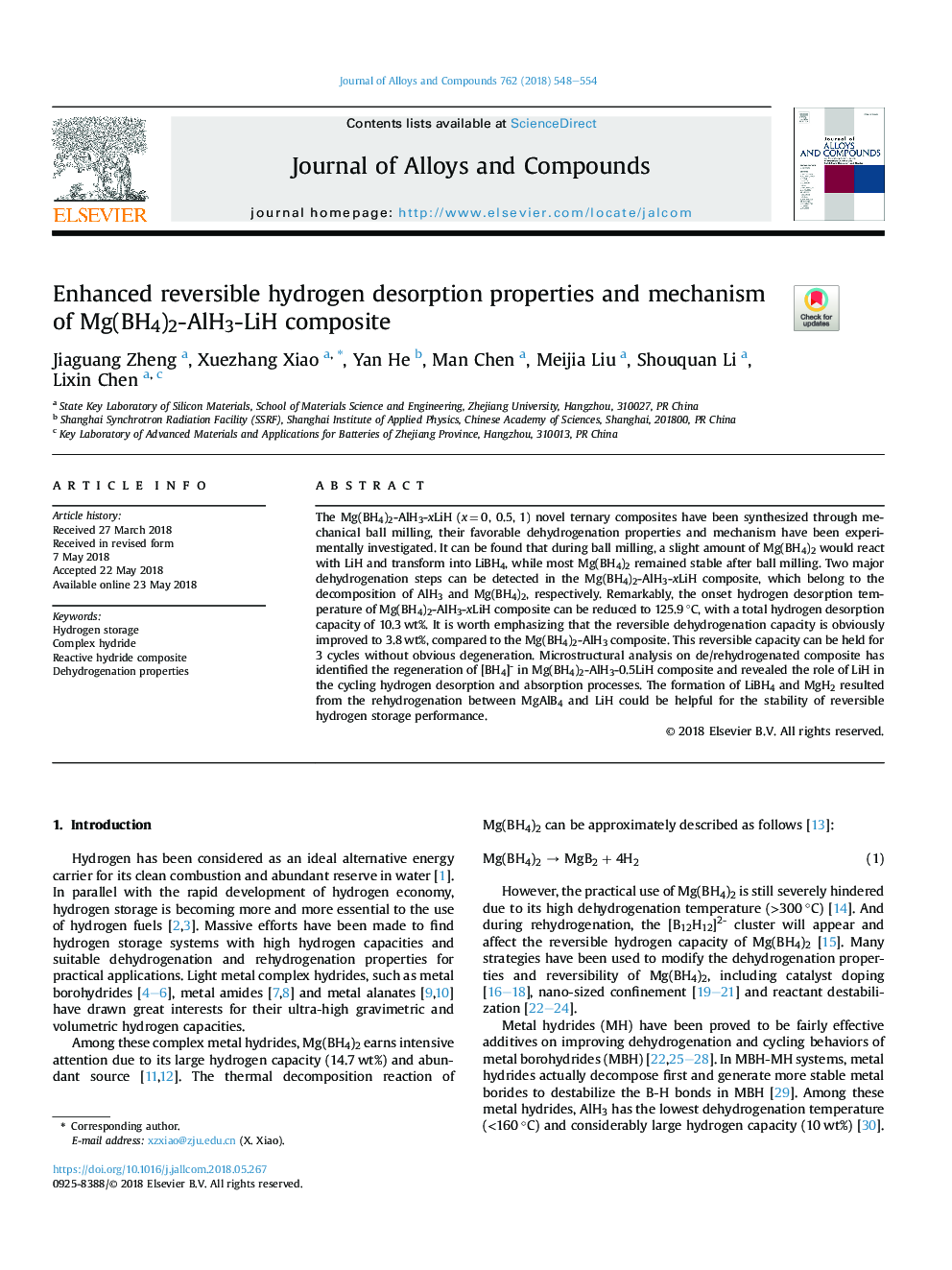| Article ID | Journal | Published Year | Pages | File Type |
|---|---|---|---|---|
| 7991072 | Journal of Alloys and Compounds | 2018 | 7 Pages |
Abstract
The Mg(BH4)2-AlH3-xLiH (xâ¯=â¯0, 0.5, 1) novel ternary composites have been synthesized through mechanical ball milling, their favorable dehydrogenation properties and mechanism have been experimentally investigated. It can be found that during ball milling, a slight amount of Mg(BH4)2 would react with LiH and transform into LiBH4, while most Mg(BH4)2 remained stable after ball milling. Two major dehydrogenation steps can be detected in the Mg(BH4)2-AlH3-xLiH composite, which belong to the decomposition of AlH3 and Mg(BH4)2, respectively. Remarkably, the onset hydrogen desorption temperature of Mg(BH4)2-AlH3-xLiH composite can be reduced to 125.9â¯Â°C, with a total hydrogen desorption capacity of 10.3â¯wt%. It is worth emphasizing that the reversible dehydrogenation capacity is obviously improved to 3.8â¯wt%, compared to the Mg(BH4)2-AlH3 composite. This reversible capacity can be held for 3 cycles without obvious degeneration. Microstructural analysis on de/rehydrogenated composite has identified the regeneration of [BH4]- in Mg(BH4)2-AlH3-0.5LiH composite and revealed the role of LiH in the cycling hydrogen desorption and absorption processes. The formation of LiBH4 and MgH2 resulted from the rehydrogenation between MgAlB4 and LiH could be helpful for the stability of reversible hydrogen storage performance.
Related Topics
Physical Sciences and Engineering
Materials Science
Metals and Alloys
Authors
Jiaguang Zheng, Xuezhang Xiao, Yan He, Man Chen, Meijia Liu, Shouquan Li, Lixin Chen,
